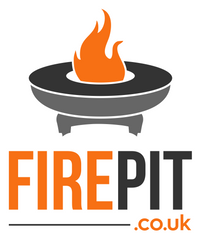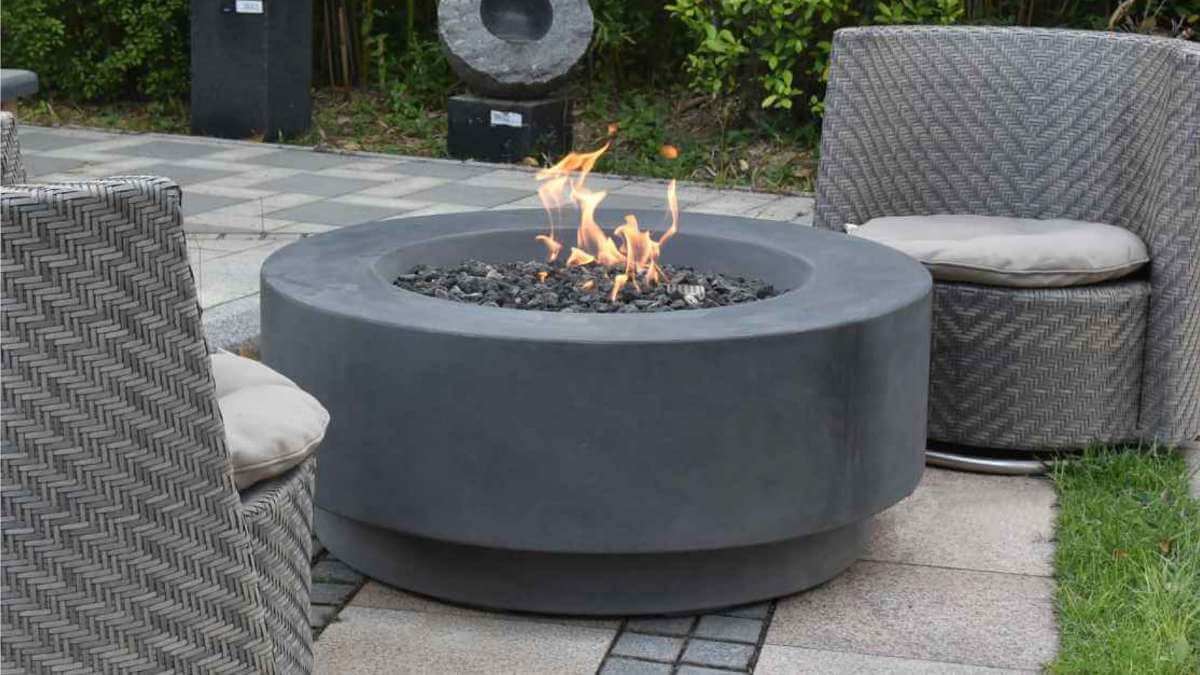The rise of bioethanol fire pits in the last few years and the popularity of gas fire pits in years gone by has naturally led to the question, which is better? Let’s break down the gas fire pit v bioethanol fire pit battle and see who comes out on top.
Let’s dive in…
What gas are we talking about?
When it comes to gas fire pits, we are talking about two different kinds – ones that use liquid propane as their fuel source, and ones that use natural gas as their fuel source.
What’s the difference? Let’s take a quick look:
- Liquid Propane is simply petroleum gas kept in a pressurised tank.
- Natural Gas is the mains gas supply to your house.
The debate of which is better, natural gas or propane, is not something we will cover in this article, we have already looked at this closely in another of our blog posts. For our purposes, we will compare both individually where relevant or refer to both together when talking about gas fire pits.
Key considerations – Gas Fire Pit v Bioethanol Fire Pit
Let’s have a look at some of the key considerations you should have in mind when comparing gas fire pits vs bioethanol fire pits. Here’s a quick of who comes out ahead in each category:
| Propane | Natural Gas | Bioethanol | |
| Installation | 5 | 3 | 5 |
| Movability | 5 | 0 | 5 |
| Cost to Buy | 5 | 4 | 3 |
| Cost to Install | 5 | 3 | 5 |
| Maintenance | 5 | 4 | 5 |
| Cost of Fuel | 4 | 5 | 3 |
| Heat Output | 5 | 5 | 3 |
| Safety | 5 | 5 | 5 |
| Environmental Impact | 3 | 3 | 5 |
| Indoor Use | 0 | 0 | 4 |
| Aesthetic | 3 | 5 | 5 |
| Flame Control |
5 | 5 | 2 |
| Total Score | 50 | 42 | 50 |
Installation
How easy the installation of your fire pit will be is likely going to be important to you.
For this, bioethanol fire pits, and propane fire pits are comparable. Many propane and bioethanol fire pits, in fact, are as easy as place and go, particularly for those that have the fuel tank safely stored inside the fire pit itself.
For propane fire pits that use an external tank then some consideration will have to be given to where that tank is kept.
Natural gas on the other hand comes with some fairly big added complications when it comes to installation.
Natural gas fire pits need to be connected to your mains gas supply. This means that you will need a professional with gas certification to do this for you. On top of that, depending on where you are wanting to place your fire pit, you are likely going to have some significant building requirements too.
Both of these factors add time, cost, and complication to your installation.
If you want to know more about installing a propane and natural gas fire pit, check out our blog post.
Movability
Being able to move your fire pit may be something you are also looking for.
For this, you are again going to find that most bioethanol or propane fire pits are your best option. Those with self-contained fuel tanks are incredibly easy to move and can be placed just about anywhere outside.
Moving propane fire pits that are connected to an external propane tank can also be fairly easy. This just depends on how long the hose is to connect the fire pit and the tank.
Natural gas fire pits, however, are not easy to move, as you can imagine. Moving your natural gas fire pit will require you to go through all the trouble of building work and hiring professionals again.
Price - Cost to Buy, Install, Maintain and Fuel
The cost is often a very significant consideration when buying anything expensive, and buying a fire pit is no different.
Let’s look at price in several ways – the cost of the fire pit itself, the price of installing the fire pit, maintenance costs and the cost of fuel.
Cost of Fire Pit - Of the three options bioethanol fire pits are generally more expensive. Gas fire pits tend to cost between £500 - £3000, natural gas fire pits tend to be a little more expensive than propane, this is usually the cost of the additional natural gas conversion kit. Bioethanol fire pits can cost anything from £1000 to £6000 and up.
Cost of Installation – Propane fire pits and bioethanol fire pits are generally very easy to install as discussed above, and because of this come with very low installation costs. Natural gas fire pits on the other hand can be expensive to install.
Maintenance Costs - These costs are minimal for all, especially the propane or bioethanol fire pits, where hardly no maintenance other than covering and cleaning. The natural gas fire pit like all gas appliances should be checked frequently by a gas engineer. This cost will not be excessive and could be carried out during the annual boiler service.
Cost of Fuel - The winner here is natural gas, we have mentioned the added complication of installing a natural gas fire pit, but once installed a natural gas fire pit is hard to beat for fuel cost and ease of use. Bioethanol is the most expensive but not unreasonably so.
Heat Output
The amount of heat your fire produces is important.
Bioethanol fire pits produce on average between 1.7kW and 8.5kW, which is pretty impressive and more than enough to keep you warm long into the evening.
Gas fire pits however win comfortably on heat output and generally speaking, a similar sized gas fire pit will produce twice the heat of a bioethanol fire pit.
Safety
When it comes to safety all three are very good. Bioethanol, however, take the prize here for one very specific reason:
It is the cleanest burning fuel, meaning all that is released is heat water, and a tiny amount of CO2.
Gas fire pits (both propane and natural gas), however, come with one very big drawback. If the fuel is not burned completely and efficiently then they can release carbon monoxide. Any build-up of carbon monoxide can be incredibly dangerous and even fatal.
Of course, with your fire pits being outside with plenty of ventilation you won’t have to worry about this, but it is something to consider if you are wanting to have your fire pit under any sort of enclosed area.
Environmental Impact
Bioethanol has a significant advantage over both propane and natural gas – it’s a sustainable and renewable resource. This alone crowns bioethanol as the undisputed winner when it comes to environmental impact.
If you add on top of this that it is a cleaner-burning fuel, meaning it gives off less CO2 (next to nothing), then if your sole focus is on your environmental impact then bioethanol is your only choice.
Indoor Use
A clear winner here is bioethanol. The only caveat is that not all bioethanol fire pits are manufactured for indoor use, those that are, are very safe.
We caution using both propane and natural gas fire pits indoors due to the release of carbon monoxide, we explain why you shouldn't use a gas fire pit inside in a separate post.
Bioethanol is very safe to burn inside but the fire pit itself will need extra safety measure to comply with safety regulations. Make sure that your manufacturer certifies that the bioethanol fire pit is safe to use indoors, or ask us, we will happily help out.
Aesthetic
There are many wonderfully designed gas and bioethanol fire pits available for a variety of manufacturers. However, for some the hose and propane tank disturbs the smooth lines.
Flame Control
Both propane and natural gas win this easily, the gas fire pits can be controlled easily by turning a knob up or down. Bioethanol on the other hand is generally more restrictive. The options are usually, full heat mode, half capacity or off.
Which is more popular?
If you’re ever in doubt as to which is better a quick search for which is currently more popular can give you a good idea. Popularity certainly isn’t the only metric to consider, but it’s certainly good to know.
In the current fight between gas fire pits and bioethanol fire pits, bioethanol is catching up quickly.
You may not be surprised by this from the key considerations above. Bioethanol certainly has plenty of advantages over its gas competitors:
- Quick and easy installation
- Clean burning
- Environmentally friendly and sustainable
- Super-efficient
- Portable
- No ventilation needed
- Can be used inside
However, gas fire pits are here to stay and loved by many. They offer many advantages of their own:
- Cheaper to buy
- Cheaper fuel
- Usually higher heat output
- Better flame control
- More familiarity
Final Thoughts
We are proud of the fact that we represent a wide range of brands. This allows us to give honest and unbiased thoughts and opinions and can focus on finding you exactly the right fire pit for your needs without any other agenda. We make sure that we only work with the highest quality products to bring you the widest range of options that you can be confident will last.
Gas fire pits v bioethanol fire pits is a close-run race in many categories. If cost is one of your key driving factors then you’re likely to want to look at a propane gas fire pit.
If the cost and hassle of installing natural gas doesn't discourage you, then this as a long term solution, a natural gas fire pit is probably the best option.
If it’s any other category, then bioethanol is hard to beat.
We have a wide range of gas fire pits and bioethanol fire pits on offer, and if you have any questions please don’t hesitate to get in touch.
Subscribe to our email
Just enter your email address below to receive a monthly email with links to all the latest blog posts. Simple unsubscribe at any time.









